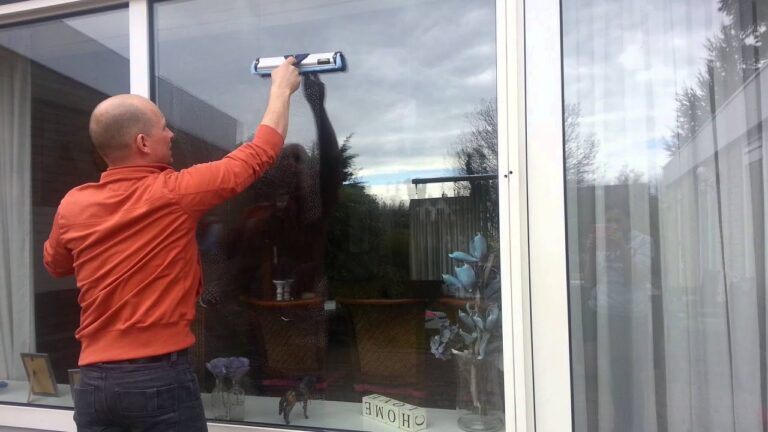7 Best Software Tools For Painters
Understanding Digital Art Software
When exploring the landscape of digital art software, it is important to understand the evolutionary journey of these tools as well as the fundamental difference between raster and vector graphics.
Evolution of Digital Painting
Digital painting has traversed a significant evolutionary path, propelled by advances in technology and the needs of artists. Initially, software like Corel Painter broke new ground by simulating traditional painting techniques on digital platforms. Today, Adobe Photoshop not only dominates the photo editing sphere but is also a powerful ally for digital artists, integrating AI tools to streamline complex tasks.
Modern digital art applications now offer an array of sophisticated features, including the ability to manipulate 3D objects and textures, enhancing the creative arsenal available to digital painters. These innovations have effectively blurred the lines between traditional and digital art mediums, enabling artists to achieve unprecedented levels of detail and realism or to venture into entirely new, experimental forms of art.
Raster vs. Vector Graphics
Raster graphics are composed of a fixed grid of pixels where each pixel represents a color. Adobe Photoshop is a quintessential example of a raster-based program, renowned for intricate detail management in painting and image editing. It is preferred when working with subtle gradations and complex color blends typical in digital painting.
| Characteristic | Raster | Vector |
|---|---|---|
| Basics | Pixel-based | Geometry-based |
| Scaling | Loses quality | Retains clarity |
| Editing | Detailed manipulation | Mathematical adjustments |
| Ideal for | Photos, complex art | Logos, illustrations |
In contrast, vector graphics rely on mathematical equations to generate shapes, allowing for infinite scalability without quality loss. Tools like Adobe Illustrator champion vector art, making them ideal for crisp, clean designs. Raster is often chosen for its organic detail while vector is preferred for its precision and scalability. Both types of graphics have their place in the digital artist’s toolbox, and the choice between them depends largely on the needs of the project at hand.
Choosing the Right Painting Software
Selecting the right painting software is critical for artists as it shapes the creation process. This section deliberates factors pivotal to this decision and contrasts software aptness for beginners and professionals.
Factors to Consider
When evaluating painting software, consider program features that will cater to specific artistic needs. Budget is a primary concern; options range from free programs like GIMP and Krita to premium software such as Adobe Photoshop and Corel Painter. The learning curve is another facet, with some digital art software demanding more technical proficiency than others. Finally, assess compatibility with existing tech setups, ensuring that the software runs smoothly on the designated hardware.
Software for Beginners vs. Professionals
For beginners, software like MediBang Paint and ArtRage offers an intuitive interface easing the learning process. Procreate, primarily for iPad use, is also incredibly beginner-friendly with its straightforward UI. In contrast, professionals may seek advanced features and options in digital art software: Photoshop‘s comprehensive toolset, Rebelle‘s realistic digital painting, and Clip Studio Paint‘s specialized functions for comic art. The choice largely hinges on desired outcomes, existing skill level, and whether the program’s offerings align with the artist’s digital evolution.
Exploring Key Features and Toolsets
When selecting painting software, the richness of the toolset is pivotal. They consider the variety and customization options of brushes and tools, layering capabilities, and the intuitiveness of the user interface.
Brushes and Painting Tools
The software’s brushes and painting tools are critical for mimicking the feel of traditional painting mediums. High-quality painting programs offer an array of tools, including custom brushes, watercolor, inks, pencils, acrylic, and markers. Users can often adjust attributes like opacity, flow, and size to achieve diverse brush strokes. For instance, Krita is celebrated for its vast brush collection, allowing for intricate detail work and broad washes.
| Tool Type | Description |
|---|---|
| Pencils | Imitate real pencil sketches with variable hardness. |
| Acrylics | Simulate the thick, textured application of acrylic paint. |
| Watercolors | Offer a translucent, blendable quality characteristic of watercolor paints. |
| Markers | Provide a seamless, solid color application similar to physical markers. |
Layers and Effects
Layers and effects are fundamental to digital painting, offering artists the ability to create complex images with control over each element. Artists can use layers to separate elements, adjust opacity, and blend modes to create depth and dimensions. With features like filters and plugins, the artist can apply intricate effects to a single layer or to the entire painting, enhancing textures and lighting without altering the underlying work.
| Feature | Functionality |
|---|---|
| Layers | Provides non-destructive editing flexibility. |
| Opacity | Controls the transparency of layers. |
| Blending Modes | Merges layers using different effects based on color and brightness. |
User Interface and Customization
The effectiveness of the user interface (UI) shapes the painting experience. An intuitive UI allows fast access to tools and reduces the learning curve for new users. Some programs offer extensive customization, enabling artists to tailor their workspaces and toolbars according to their workflow. Features like BuilderPrime and JobNimbus provide a unified platform to manage a variety of project types, emphasizing adaptability and efficiency.
| UI Aspect | Importance |
|---|---|
| Customization | Aligns the software layout with the artist’s process. |
| Accessibility | Facilitates quick access to more frequently used tools. |
| Adaptability | Adjusts to different project types and complexity. |
Platforms and Devices Compatibility
Choosing the right software tool for digital painting depends largely on the compatibility with various devices and platforms. Painters should ensure their software selection can integrate seamlessly with their workflow, whether they utilize desktops, tablets, or mobile devices.
Software for Windows and Mac
Adobe Photoshop stands as the go-to option for many professional digital artists using Windows and Mac platforms. Its vast toolset supports a variety of graphic tablets and devices, including those that accommodate the Apple Pencil. For a premium experience tailored to emulate traditional painting in a digital format, Corel Painter is another heavyweight that efficiently operates on both Windows and Mac operating systems, offering an intuitive interface for creators.
Mobile Painting Apps
When it’s about staying creative on the go, Procreate is the top choice for iPad users, taking full advantage of the device’s capabilities along with Apple Pencil support. Adobe Photoshop also offers a mobile version that syncs projects via cloud storage, allowing for a smooth transition between devices. Artists preferring Android tablets or phones aren’t left behind, with Clip Studio Paint providing a versatile painting experience across various mobile platforms.
Enhancing Creativity with Advanced Techniques
Artists can harness a variety of software tools to push the boundaries of their creative expression. These digital platforms allow for the fusion of traditional painting sensibilities with contemporary digital art methods.
Animation and Comics Creation
One of the most vibrant fields that digital art software excels in is animation and comics creation. For illustrators and artists keen on crafting dynamic stories, tools like Clip Studio Paint provide a comprehensive suite for creating manga and comics. This particular software stands out for its specialized features that mimic the real-life effects of drawing comics by hand, while also offering advanced capabilities like vector layers and 3D models to refine artwork.
Integrating Traditional Techniques
Many painters wish to combine the tactile quality of traditional mediums with digital advantages. Software such as Corel Painter is renowned for its ability to replicate the feel and look of traditional painting. It presents artists with an array of brushes and textures that mimic natural materials, offering a digital canvas where traditional techniques are brought to life. In addition to its wide selection of brushes, Corel Painter also provides extensive options for customizing media to achieve the desired effect, bridging the gap between traditional and digital art forms.
Resources for Mastering Painting Software
Mastering painting software can significantly elevate an artist’s digital creations. Essential resources such as detailed tutorials and active online communities can help artists navigate the learning curve, grasp the basics, and pick up advanced tips.
Tutorials and Online Courses
Tutorials are invaluable for both beginners and seasoned artists. For example, users seeking to master ArtRage can find comprehensive guides tailored to the unique tools and natural painting techniques that the software offers. Similarly, would-be Photoshop experts can benefit from a wide array of Photoshop tutorials, which cover fundamental operations to complex AI-assisted processes.
Online courses offer structured learning opportunities for digital painters. Platforms like Udemy, Skillshare, and Coursera feature courses that range from the basics of digital art to specialized techniques. These courses often come with direct feedback from instructors, which can be instrumental in overcoming initial learning hurdles.
Communities and Forums
Communities and Forums serve as a support network where artists can share their work, seek advice, and exchange tips. Platforms such as DeviantArt or the Procreate forums can be highly beneficial for artists looking to refine their skills. Members often share their own processes in the form of step-by-step breakdowns or real-time videos, which can be valuable learning resources.
Social media groups, particularly on Facebook and Reddit, offer spaces for artists to connect and share resources. Subreddits or Facebook groups dedicated to specific software tools can provide targeted assistance and enable users to remain updated on the latest features or tutorials.
Frequently Asked Questions
When it comes to digital painting, artists have specific needs depending on their skill level, preferred medium, and professional demands. This section aims to address some of the most common inquiries regarding software tools for painters.
What are the top-rated drawing software options for PC users?
For PC users, Adobe Photoshop stands out as a top-rated software for digital art, offering robust features for advanced users. Corel Painter is another highly-regarded option, praised for its realistic brushes and ability to mimic traditional painting techniques.
Which free digital art programs are most recommended for professional painters?
Krita is frequently recommended for professional painters seeking a free digital art program, known for its open-source platform and comprehensive brush customization. GIMP serves as an excellent alternative with extensive tools for image manipulation and painting.
What is the most widely adopted digital painting software in the artist community?
Adobe Photoshop is one of the most widely adopted digital painting software among artists for its versatility and extensive features. Many professional artists integrate it into their workflow for creating concept art, illustrations, and editing images.
Are there any digital art tools particularly suited for beginners?
Procreate is particularly well-suited for beginners, available on iPads and iPhones, offering an intuitive interface and a wide variety of brushes. Autodesk Sketchbook is also beginner-friendly with its user-friendly approach and is available for free.
Which painting software provides the best features for painting contractors’ takeoff processes?
BuilderPrime is tailored to the needs of painting contractors, providing comprehensive features for managing various aspects of a construction project, including takeoff processes that are pivotal for accurate project estimates and cost tracking.
Can you list a few free digital art software options available for download?
Absolutely, artists can download free digital art software such as Medibang Paint and FireAlpaca. These programs offer an array of tools suitable for painters at all levels and are especially appreciated by those just starting out in digital art.






